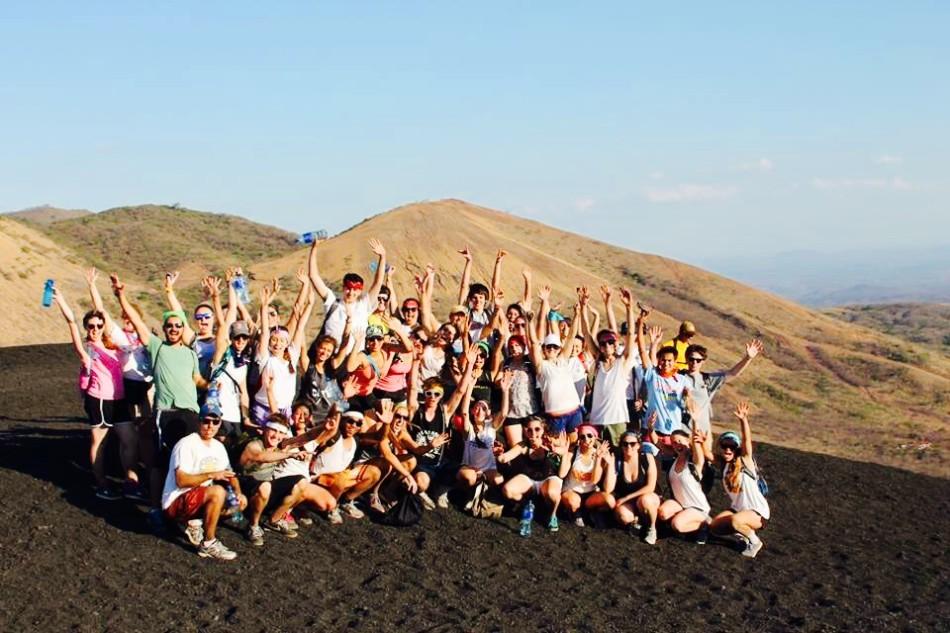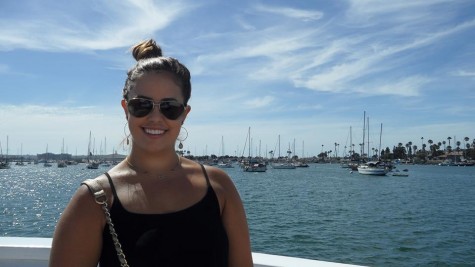A Student’s Day-by-Day Diary of a Mission Trip (Slideshow)
May 30, 2014
This past Easter Break, thirty-five Cathedral students trekked to Nicaragua to serve for “Amigos for Christ.”Four Cathedral teacher chaperones also attended the mission trip, including Ms. Alison Purpera, Mrs. Sandy Blackstone-Gardner, Mr. Kevin Dunn, and Mr. Charles Mansour.
The students who travelled to Nicaragua had a particular mission. Their mission was to help build a clean water system for the community of Valle Los Morenos because the community’s current mode of retrieving water was through a well.
One of the students, Amanda Dea, wrote a journal about her daily experiences on the trip.
Easter Sunday, April 20th: The group woke up and ate their breakfast that was prepared by Patricia and her kitchen crew, which included about seven native Nicaraguans. Next, Amanda writes, they walked for two minutes to attend Easter Sunday Mass at a nearby Catholic Church. Amanda was so surprised at the many differences of the Mass, especially because it was celebrated as a Latin Mass. “The main difference included kneeling down while the priest dipped the Eucharist into the Blood instead of receiving it by hand. Also, the children were especially welcoming at Mass mainly due to their eagerness to shake the priest’s hands. The kids were very happy to say “la paz sea con vosotros” on the altar to the priest.”
After that, the group hiked a volcano named Cerro Negro. They were informed, Amanda writes, of two alternative routes to go up the volcano: “the hard way”and “the easy way.” The hard way consisted of “bear crawling” up the front face of the volcano. The other way was scenic climb behind the back of the volcano. Wanting to take on a challenge, Amanda chose the hard way. “It took around two hours to get to the top,” and finally at the top of Cerro Negro, Amanda said that“the view was absolutely beautiful. Hard side or easy side, everybody managed to make it to the top in the hot sun.”
On Monday, April 21st, Amanda and a few others took the day off to rest their bodies, so they did not participate in the activities on that day.
Tuesday, April 22nd: This day Amanda and the crew did some daily chores. “One of the chores was to make lunch everyday, and it usually was peanut butter and jelly sandwiches.” On this day, the group travelled to Valle Los Morenos, where they began to lay down pipes for a fresh water system there. “The trenches were at times difficult to dig because of how dry and rocky the ground was. We had to use picks and shovels to dig into the ground. The work was physically demanding, but knowing we would be a part of something so important to the members of Valle Los Morenos motivated us to do as much as we could.”
Amanda says that the locals were so welcoming as well. “As a part of building the water system, one family member per family in the community had to contribute to the digging.” She said she was shocked to see how differently they live from our everyday lives. “Their houses were put together with tin, wood, cement and any other material stable enough to hold together walls and a roof. There was really no floor inside, just dirt. The kitchens had a stone-looking structure that acted as their stove/oven.”
The community was very warm and generous as well. Amanda felt even more welcome by one woman. “One house in particular was making some sort of soup. The soup was being heated by a chunk of wood burning underneath some stone. The owner of the house brought out a chair for Ms. Purpera and me to sit on, and we began to have a conversation. We learned that the woman had twelve children and about twenty-eight grandchildren.”
Amanda also says that another major difference in this community were “the cows, horses, dogs, chickens, and pigs that freely roamed around, but it was sad to see how skinny they were.”
Wednesday, April 23rd: Everyone took a day off from working in the community. Instead, they visited elderly homes. At one of the homes, they chatted with the residents. “We all sat in a circle and interacted with each other. Some people were very chatty and others just simply liked the company. One old lady that I was talking to named me “Amandita” and my friend Laura, “Laurita.” She was so nice and unfortunately that’s all I could understand from her. My mediocre Spanish made it difficult to understand each other. Another thing they loved was dancing. We brought a big stereo and danced with and in front of them. They all smiled and laughed as we did the Cupid Shuffle and Wobbled for them. It was so nice to see them laugh and have a good time with us.”
Afterwards, the group went to the downtown area of Chinendega to shop and buy some souvenirs. Amanda and few others ate some Subway and the others ate at restaurants. When they came back “home,”the group swam in the pool and Amanda says it was “so fun swimming with everybody because everyone was together after a huge day of work. We enjoyed a time of relaxation and fun.”
Thursday, April 24th: “Today, a group of twelve was chosen to go to a school to teach children and to play with them.” Amanda was one of these people, and she taught third and fourth graders. “We taught them large number subtraction, addition, shapes, days, numbers, and colors all in English. The school didn’t have much, but the kids and the teachers were still so happy and thankful. One girl in particular told me that in her free time she loved to study English. That will always have a place in my heart because education is not valued as much there as it is in the States.” Amanda says that it was so nice to visit these children who had so little in their lives.
Friday, April 25th: The group travelled back to Valle Los Morenos on Friday to finish their work. The day’s plan consisted of digging more dirt for the trenches, and laying the rest of 300 feet of pipe. “Seeing the very long three foot deep trench at the end that the group dug was so satisfying. It made us feel special and truly apart of the project.”With that done, they played some baseball and kickball games with the community. ” It was so fun interacting with everybody as music played and the hot sun was out. Towards the end, a community member was selling some sweet corn bread; it tasted so good.” Amanda says after that, the crew eventually returned “home,”where they debriefed the trip as they did at the end of every day.
In the end, the trip was very rewarding, especially for Amanda. “I have finally come to the full understanding that money does not mean happiness. It is God, friends, family, and the relationships with people that bring happiness. The people in Nicaragua were truly happy even though they did not have all the material things they wanted. And this does not mean that just because you have money, you cannot truly be happy. This means that having God and relationships with the people you love can truly make you happy.” In other words, the trip was truly a success on all levels.






















































